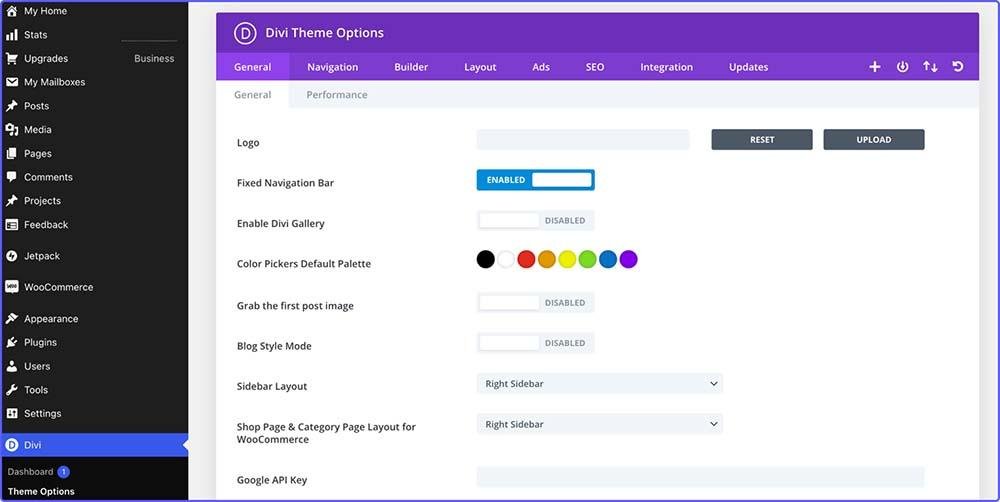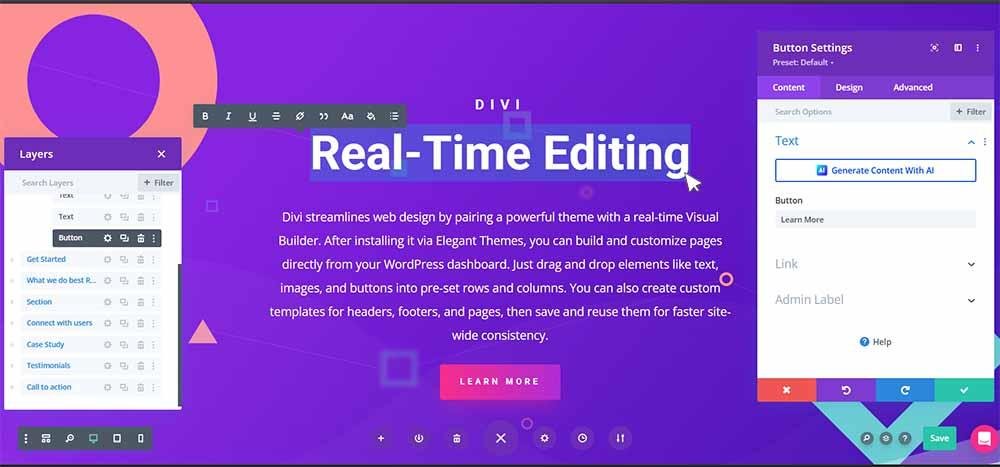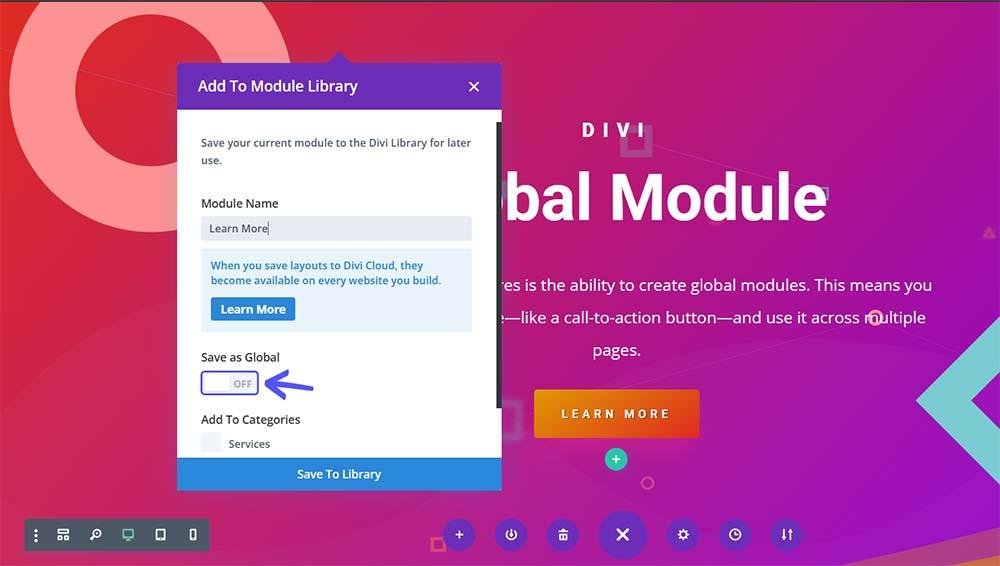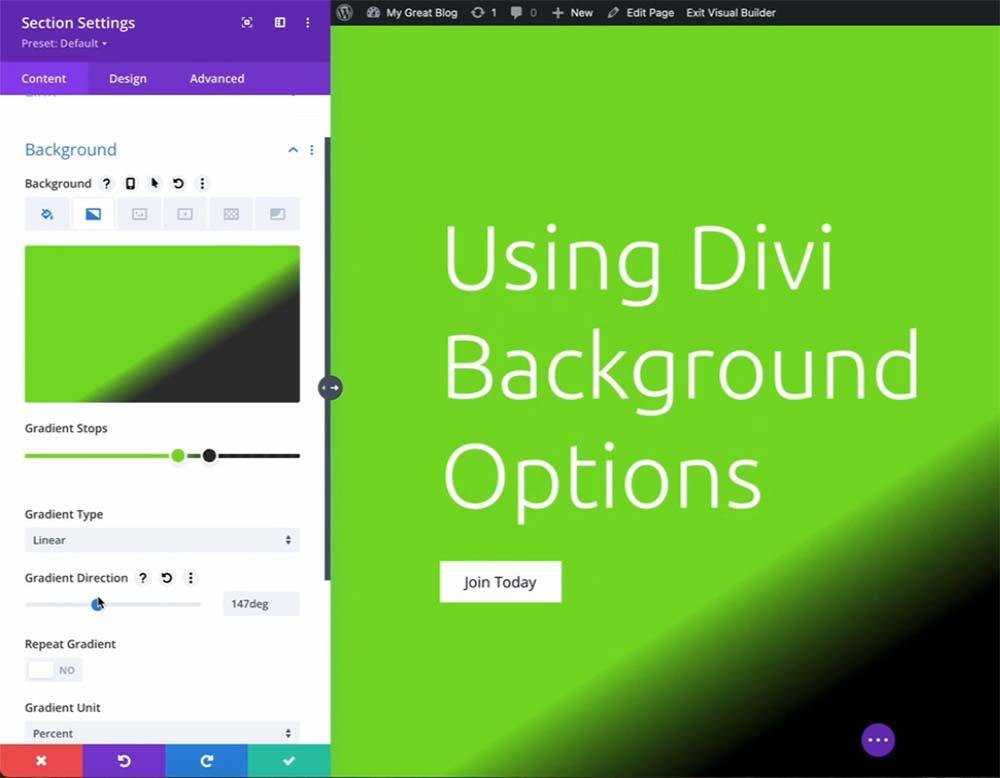Have you ever felt overwhelmed by the sheer number of WordPress themes available? Choosing the right option can be daunting, especially when you want a blend of flexibility and ease of use.
Enter the Divi theme, a popular choice that promises to simplify your website-building experience.
With its drag-and-drop builder and extensive customization options, Divi aims to cater to everyone—from bloggers to eCommerce entrepreneurs. But does it deliver on its promises?
In this Divi theme review, we’ll dive into its features, pros, and cons, helping you decide if it’s the right fit for your next project.
Disclaimer: If you buy any products through links on this site, I may earn a commission. But it doesn't make any difference to your cost, and it helps me keep this blog running. So you could always read my articles for free.
What is Divi?
Divi is a versatile WordPress theme developed by Elegant Themes, designed to empower users of all skill levels to create stunning websites without needing coding knowledge.

Divi simplifies the process of building a website, blog, or online store with its intuitive drag-and-drop Visual Builder.
With over 40 customizable modules—like sliders, testimonials, and contact forms—you can mix and match elements to craft unique layouts.
For instance, if you run a photography business, you can easily create a captivating portfolio using Divi’s gallery module, showcasing your work with just a few clicks.
One of my favorite features that I would like to highlight in this Divi theme review is the Theme Builder. It lets you design headers and footers tailored to specific pages or posts.
Because of this flexibility, you can maintain a consistent look across your site while still customizing individual areas.
Moreover, Divi offers more than 800 pre-made designs and layout packs, making it easy to get started quickly.
How Divi works
Divi works by combining a powerful theme with an intuitive Visual Builder, allowing you to create and customize your website effortlessly.
Once you install Divi from Elegant Themes, you can access its features directly from your WordPress dashboard.

Using the visual builder, you can edit your pages in real time by dragging and dropping elements like text boxes, images, and buttons into rows and columns.
For example, if you’re building a restaurant site, you can easily add a menu module that showcases your dishes with enticing images and descriptions.
Divi also includes a theme builder, enabling you to design custom templates for headers, footers, and specific pages.
This means you can create a unique look for your blog posts while maintaining a consistent style across your site. You can save these templates to reuse later, which is a huge time-saver.
Divi theme key features
Divi is a powerful WordPress theme that stands out for its flexibility and user-friendly features. In this Divi theme review, let’s take a closer look at some key features that make it a popular choice for both beginners and experienced web designers.
Drag-and-drop builder
The heart of Divi is its Visual Builder. It lets you create and customize your website directly on the front end.

This means you can see your changes in real-time, making it easier to design without needing to know any coding.
For instance, if you’re building a portfolio site, you can simply drag and drop image galleries and text modules where you want them, adjusting sizes and styles with ease.
Pre-designed layouts
Divi offers an extensive library filled with over 800 pre-made layouts and modules. These resources are incredibly helpful when you’re short on time or inspiration.

You can find layouts tailored for specific industries—like restaurants or eCommerce—making it easy to get started.
For example, if you own a coffee shop, you can quickly implement a layout showcasing your menu, complete with images and descriptions.
Global modules and settings
One of the standout features I’d like to point out in this Divi theme review is its ability to create global modules. This means you can design a module once—like a call-to-action button—and use it across multiple pages.

If you decide to update its design later, the changes will automatically reflect everywhere the module is used. This saves time and ensures consistency throughout your site.
Advanced design options
Divi provides advanced design settings that allow you to customize every aspect of your website. You can adjust backgrounds, borders, spacing, and typography with precision.

For instance, if you’re creating a blog, you can choose specific fonts and colors that align with your brand identity, ensuring your site looks cohesive.
WooCommerce integration
If you’re looking to set up an online store, then the one feature you can’t miss in this Divi theme review is how seamlessly it integrates with WooCommerce. It offers custom WooCommerce modules that let you showcase products beautifully.
You can design product pages that not only look good but also provide an excellent shopping experience for your customers.
Responsive design capabilities
With Divi, your website will look great on all devices—desktops, tablets, and smartphones.
The responsive editing feature allows you to adjust how elements appear on different screen sizes easily. This is crucial as more users access websites from mobile devices today.
Divi Cloud for asset management
Divi Cloud is another innovative feature that lets you save and manage your design assets in one place. You can store layouts, templates, and modules so they’re readily available for future projects.
This feature is really useful if you frequently build websites for clients or have multiple projects running simultaneously.
Divi theme review: pros and cons
Divi is a popular WordPress theme known for its versatility and extensive features. However, like any tool, it has its strengths and weaknesses.
In this Divi theme review, let’s look at its pros and cons to help you decide if it’s the right fit for your website.
Pros of Divi theme
Design flexibility
One of the standout features of Divi is its design flexibility. With the Visual Builder, you can create custom layouts without any coding knowledge. You simply drag and drop elements like images, text, and buttons.
For example, if you’re creating a portfolio site for your photography business, you can easily arrange galleries and testimonials to showcase your work beautifully.
Pre-made templates
Divi offers over 800 pre-made layouts that cater to various industries. This is especially helpful for beginners who may feel overwhelmed by starting from scratch.
If you run a restaurant, you can quickly import a layout that highlights your menu and ambiance.
Responsive design
A Divi theme review is never complete without mentioning how its responsive design ensures that your site looks great on all devices. The responsive editing feature allows you to tweak how elements appear on mobile and desktop views, which is crucial in today’s mobile-first world.
Strong community and support
The Divi community is robust, with numerous third-party developers creating add-ons and resources. This means you have access to additional functionalities and layouts beyond what Divi offers out of the box.
Cons of Divi theme
Performance issues
One common drawback users encounter is performance. Some report that Divi can be slow to load, particularly on larger websites with many elements. This can affect user experience and on-page SEO.
For instance, if you’re running an eCommerce site with numerous product images, you might notice slower load times compared to lighter themes.
Reliance on shortcodes
Another drawback I would like to point out in this Divi theme review is its heavy reliance on shortcodes for its layout structure. This can make switching themes later challenging since the shortcodes may not translate well to other themes.
If you decide to migrate away from Divi in the future, you could face significant rework to get your site looking right again.
Learning curve
While Divi is designed to be user-friendly, some beginners find it overwhelming due to its extensive customization options.
The interface can feel clunky at times, requiring multiple clicks to achieve simple changes. It took me a few hours to get comfortable navigating the builder effectively.
Limited integration with block editor
Divi does not fully integrate with WordPress’s block editor (Gutenberg), which can be a downside if you prefer using that native interface for content creation. This might limit your ability to use some of WordPress’s newer features seamlessly.
Divi theme pricing
Divi offers flexible pricing options that cater to various user needs, making it accessible for both beginners and professionals.
In this section of this Divi theme review, I will break down its pricing structure and what you can expect. Divi has two primary pricing plans:
Yearly Plan: Costs $89 per year, allowing you to use Divi on unlimited websites. This plan includes access to the Divi theme, builder, and hundreds of pre-made website packs.
Lifetime Plan: A one-time payment of $249 grants you lifetime access to Divi, including all updates and support. This option is great for those who prefer not to deal with annual renewals.
For advanced users, there are additional plans:
Pro Plan: Priced at $277 per year, it includes extra features like AI tools and cloud storage.
Agency Plan: Costs $761 per year and offers premium support and team management features for agencies managing multiple clients.
The pricing for Divi is quite reasonable considering the features it offers. Unlike other website builders that charge per site—like Elementor at $59 for one site—Divi allows you to build unlimited websites under a single license.
This can save you money in the long run if you manage multiple projects or client sites.
While some may find the higher-tier plans expensive, they provide substantial value, especially for agencies needing advanced tools and support.
Overall, Divi’s pricing reflects its robust capabilities and flexibility. As a result, it’s a strong contender in the WordPress theme market.
Final verdict on Divi
Divi is a powerful WordPress theme with impressive design flexibility and extensive features. Its Visual Builder makes customization easy, even for beginners. However, some users may experience performance issues and a steep learning curve.
Divi is best for entrepreneurs, freelancers, and agencies looking to create multiple websites efficiently. Its pricing is reasonable for unlimited site usage, making it a solid investment.
But if you prefer a lighter theme or simpler interface, consider alternatives like Astra or GeneratePress. Both offer excellent speed and customization options without the complexity. Ultimately, choose the theme that aligns best with your specific needs and comfort level.
Did I miss anything in this Divi theme review? Did you try Divi? Do you have any questions or comments? Share your thoughts below in the comments section.




